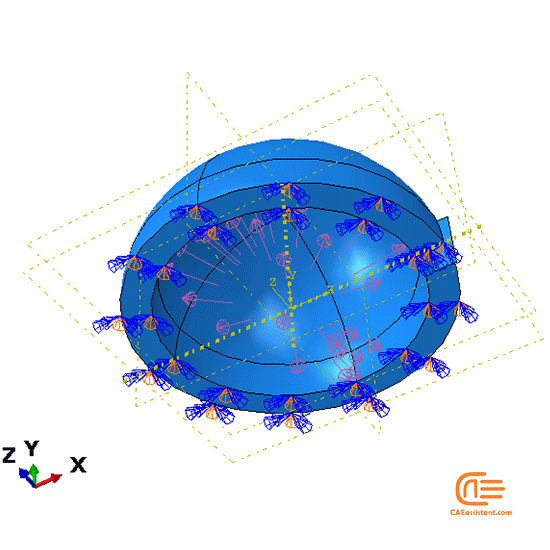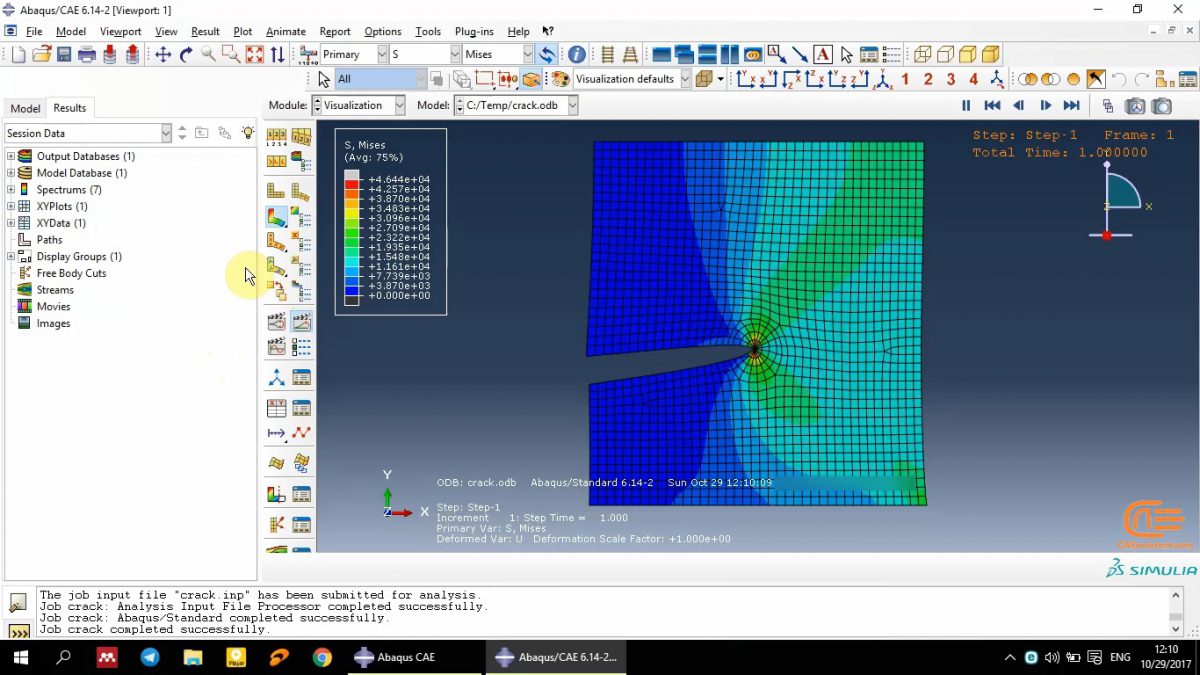
If we expect the FEA packages to give the right answers by simply pushing a button, we will definitely be disappointed (or despaired), even though some packages may have claimed they can do so. This requires engineering judgments and experiences.
Crack propagation in abaqus cae crack#
Initial crack is given at lower middle portion. not require to change the mesh to monitor crack propagation 5. Material is homogeneous, loading is applied at the middle of the beam. O critrio de compara ao o factor de intensidade de. Therefore, we can put our interface elements along the potential crack path (our concern). I have modeled crack propagation in three point beam bending test on concrete. If we study a delamination in sandwich composites or debonding of a stiffener from the skin, we know the crack path (our concern) a prior. For example, we should be able to identify our major concerns in a problem. It must appear immediately following the.

So, my point view is that, at current stage, we still rely on our knowledge and experience to solve such problems. This option is used to specify the criterion for crack propagation along initially partially bonded surfaces. of initial cracks that are independent of the base model via Abaqus/CAE. Although, someone (or some FEA packages) have claimed their approaches are blah blah., however, when you really touch it, you will know it is not as you expected. for curvilinear fatigue crack growth and life prediction analysis of metallic. If you like the video Please SUBSCRIBE to the channel and I'll. To my understanding, simulation of the arbitrary crack propagation is still remained unsolved as one of the most challenging topics in solid mechanics. Modeling XFEM fatigue crack propagation in ABAQUS using Direct Cyclic approach. SB, Progressive crack growth analysis using interface element based on the virtual crack closure technique, Finite Elements in Analysis and Design, 42(2006): 977-984.ģ. Farahmand B, Saff C, Xie De, and Abdi F, Estimation of fatigue and fracture allowables for metallic materials under cyclic loading, 48h AIAA/ASME/ASCE/AHS/ASC Structures, Structural Dynamics & Materials Conference, AIAA-2007-2381. If you are interested, you may read my papers for details.ġ. Xie D and Waas AM, Discrete cohesive zone model for mixed-mode fracture using finite element analysis, Engineering Fracture Mechanics, 73(2006): 1783-1796.Ģ. Xie D and Biggers, Jr. Therefore, I developed ABAQUS UEL based on VCCT (DCZM) to study the crack propagation since they are mesh independent for crack problems. We will teach you to use Abaqus/CAE to create. You will never get converged results using stress criteria.įor this reason, we should avoid using stress/strain criteria, though ABAQUS has this option. This course covers the techniques for capturing crack-tip singularities in fracture mechanics problems. stress intensity factors, and crack propagation directions.

The finer the mesh, the higher the stress. Abaqus/CAE includes modeling and postprocessing capabilities for fracture mechanics analyses. As a result, the stress value will depend on FEA mesh size.
As we all know that at the crack tip, the stress is singular.


 0 kommentar(er)
0 kommentar(er)
